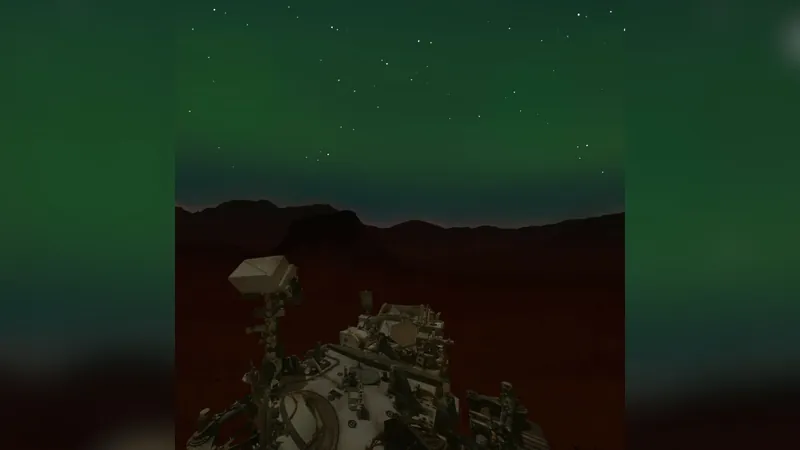
Get Ready for Mars' Glowing Green Skies: Scientists Predict Auroras!
2025-09-15
Author: Wei
Mars, famously dubbed the Red Planet, has a hidden side: under specific cosmic conditions, its skies can dazzle with shimmering green auroras. Excitingly, scientists have announced that they can now predict when this celestial spectacle will occur.
These mesmerizing auroras, created by charged solar particles colliding with the Martian atmosphere, provide essential warnings against harmful radiation for future astronauts venturing to Mars. Unlike Earth, where the magnetic field channels solar particles towards the poles, Mars lacks a global magnetic shield, allowing the entire night sky to light up in a diffused green glow from oxygen atoms located less than 60 miles (about 100 kilometers) above the surface.
April 2024 marks a milestone in Martian exploration with NASA’s Perseverance rover capturing the planet’s first visible-light aurora, a monumental event recorded directly from the surface of another world.
At a recent meeting in Helsinki, Finland, Elise Knutsen, a postdoctoral researcher from the University of Oslo, revealed a significant second detection of Martian auroras, along with advanced forecasting tools developed by her team. This innovative approach aims to pinpoint when these magical displays will light up the red skies.
"The fact that we've successfully captured auroras again shows that our prediction methods are effective," Knutsen highlighted.
Unlike Earth, where aurora predictions benefit from extensive historical data, forecasting Mars’ glowing spectacle is still a work in progress. As part of their groundbreaking study, Knutsen's team positioned Perseverance’s cameras to monitor the skies following coronal mass ejections (CMEs)—vast eruptions that send billions of tons of charged particles shattering through space.
The urgency of planning rover observations means researchers have to make educated guesses on the storms most likely to produce auroras. The team made eight attempts between 2023 and 2024, with early efforts not yielding results due to weaker CMEs. However, by focusing on the more intense, faster storms, they finally captured two stunning instances of glowing green auroras.
While powerful CMEs typically offer a greater chance for a light show, results can still be unpredictable. "There's an element of chance involved, so sometimes, it's just down to luck," said Knutsen. Predicting earthly auroras is similarly imprecise—perfecting this science is a challenge on both planets.




 Brasil (PT)
Brasil (PT)
 Canada (EN)
Canada (EN)
 Chile (ES)
Chile (ES)
 Česko (CS)
Česko (CS)
 대한민국 (KO)
대한민국 (KO)
 España (ES)
España (ES)
 France (FR)
France (FR)
 Hong Kong (EN)
Hong Kong (EN)
 Italia (IT)
Italia (IT)
 日本 (JA)
日本 (JA)
 Magyarország (HU)
Magyarország (HU)
 Norge (NO)
Norge (NO)
 Polska (PL)
Polska (PL)
 Schweiz (DE)
Schweiz (DE)
 Singapore (EN)
Singapore (EN)
 Sverige (SV)
Sverige (SV)
 Suomi (FI)
Suomi (FI)
 Türkiye (TR)
Türkiye (TR)
 الإمارات العربية المتحدة (AR)
الإمارات العربية المتحدة (AR)